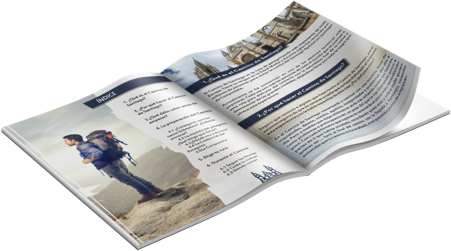In your travel documents, you will find an emergency assistance telephone number where we are available 24 hours a day, 365 days a year. This way you can travel with peace of mind knowing that we are at your side to help you quickly solve any problem, incident or doubt you may have along your Camino de Santiago.
Together with the telephone helpline we will also provide you with the contact details of different services on the Camino (contracted accommodation, taxis, luggage transport, etc.).
What can you use the 24h helpline for?
If you have become disorientated or lost on any stretch of the Camino
Although it is practically impossible to get lost on the Camino, these things can happen. If you are not sure if you are following the correct route, you can call us, send us your location and we will tell you how to get back on the route. A trick that is often very useful if you think you’ve become disoriented, is to go back to the last yellow arrow you saw and from there get back on the right path.
If you can’t find your accommodation
When you make your reservation we will send you the exact location of your accommodation, with the address and contact telephone number. But in case you have trouble locating it, it is preferable that you call us to help you find it.
If you need a transfer
If you have had any problem on your Camino de Santiago and you need a taxi to move, contact us and we will quickly send you a driver who will pick you up to take you to the place you need.
Any type of incident
If you have any kind of incident and you don’t know how to handle it, call us and we will solve it instantly.


